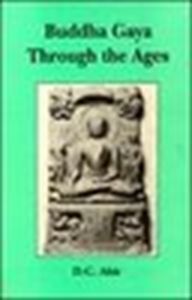
Contents: Preface. Introduction. 1. Uruvela--the land of enlightenment. 2. Asoka and Buddha Gaya. 3. When and by whom the temple was built? 4. Sri Lankan monks and monastery. 5. Chinese pilgrims in Buddha Gaya. 6. Vishnupada or Buddhapada? 7. Struggle for survival. 8. Burma repairs the Maha Bodhi temple. 9. The Mahant and the Maha Bodhi temple. 10. Burma's another effort to repair the temple. 11. repairs and restoration by the British. 12. Sir Edwin Arnold pleads the Buddhist case. 13. Anagarika Dharmapala's epic struggle. 14. The Bodh Gaya temple, act, 1949. 15. Some important events (1953-1993). 16. The Maha Bodhi temple today. 17. Buddhists seek amendment of the 1949 act. 18. New temples, new horizons. Appendices: 1. Future development of Buddha Gaya--some suggestions. 2. The Mahabodhi temples outside India. Select bibliography. Index. Maps and illustrations.
"Buddha Gaya or Bodh Gaya, being the Holy Seat of Gautama Buddha's Enlightenment, is the most sacred Buddhist shrine. Hence, it has always been the first choice of the pilgrims. Beginning with the visit of Asoka the great in 260 BC, the streams of pilgrims flowed towards it from India and abroad, without intermission, for more than 1500 years. Then, with the decline of Buddhism in India, Buddha Gaya too fell on bad days, and the Great Maha Bodhi temple was lost into oblivion. In 1590 AD, the great temple was occupied by a Hindu Mahant, and till today the Buddhists have not been able to regain complete control of their holy shrine.
"This study by a distinguished Buddhist scholar presents for the first time a comprehensive and uptodate history of Buddha Gaya through the ages, from 528 BC to 1993 AD. Sifting minutely all the available archaeological, inscriptional and literary evidence, the author traces step by step, in seventeen chapters, the origin, development, decline, desecration, restoration and revival of the Maha Bodhi Temple as well as the current Buddhist agitation seeking amendment of the 1949 act. The new temples built at Buddha Gaya in recent years by the Buddhist countries have also been described in brief in the last chapter. And to make this study complete in all respects, the author has also added two appendices--in regard to the future development of Buddha Gaya, and the Maha Bodhi temples outside India." (jacket)